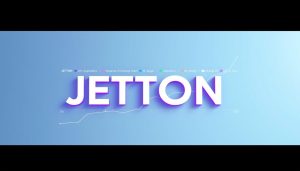Navigating the complex world of token allocation can be tricky, especially when dealing with TON tokens within The Open Network ecosystem. Ensuring a strategic allocation that maximizes value and maintains alignment is crucial for long-term success. It’s not just about distributing tokens; it’s about creating a robust and sustainable framework that supports contributors and the community.
One key principle in allocating TON tokens involves distributing them according to the value each participant brings. By aligning token allocation with milestones and vesting periods, you can attract and retain valuable contributors. The idea is to encourage active participation and long-term commitment within the network, fostering community growth and technological advancement.
Additionally, understanding the legal landscape of TON tokens is important for safeguarding your investment. By staying informed about regulatory requirements, you can avoid potential legal pitfalls and ensure your allocation strategy is compliant.
Key Takeaways
- Strategic allocation maximizes value and maintains alignment.
- Allocate tokens based on participant value and include vesting periods.
- Comprehend legal requirements to ensure compliance.
Understanding TON and Its Tokens
The Open Network (TON) is a decentralized and scalable blockchain platform designed to support smart contracts and various financial applications. It stands out for its integration capabilities and its native token, Toncoin, which serves multiple functions within the network.
The Basics of TON
The Open Network, also known as TON, was initially created by the team behind Telegram. It utilizes a decentralized layer-1 blockchain architecture designed to be highly scalable and fast. TON’s unique selling point is its ability to process millions of transactions per second, making it suitable for a wide range of decentralized applications, including cross-chain exchanges and financial transactions. The network’s native token, Toncoin, is integral to the ecosystem, enabling transaction fees, smart contract executions, and dApp operations.
Key Features
- Decentralization: Operates without a central authority
- Scalability: Can handle a high volume of transactions efficiently
- Smart Contracts: Supports complex financial and operational protocols
TON vs Other Blockchains
TON stands out when compared to other prominent blockchains like Ethereum. While Ethereum is a pioneering platform for smart contracts and decentralized applications, it struggles with scalability issues and higher transaction fees. In contrast, TON is built to be highly scalable, allowing it to process large numbers of transactions quickly and efficiently. It also supports advanced cross-chain capabilities, facilitating the integration with networks such as Ethereum and Binance Smart Chain without compromising speed or security. Toncoin is used across these operations, making it a versatile and essential part of the network.
Comparison in Features
TON:
- High scalability
- Lower transaction fees
- Integrates multiple blockchains
Ethereum:
- Established ecosystem
- Rich in dApp diversity
- Higher transaction costs
By providing a faster and cost-effective alternative, TON aims to position itself as the go-to platform for decentralized financial applications and smart contracts.
Drafting a Strategic Token Allocation
Creating a solid token allocation strategy ensures fair distribution, motivates contributors, and aligns with long-term goals. Key principles and a clear vision are crucial.
Allocation Principles
For a successful token allocation, start by distributing tokens based on the value contributed. This approach rewards those who add significant value to the project, such as developers and early supporters.
Enforcing lockups and vesting periods ensures alignment. For example, core team members might receive 20-25% of tokens, vested over 2-4 years. This retains them for the long term and prevents sudden market dump.
Advisor allocations should be smaller, usually around 5-10%, with shorter vesting to capitalize on their expertise quickly. Community members and early users often receive 35-37%, fostering trust and wider participation.
Setting clear milestones is important. These can be tied to token distribution, rewarding achievement and progress. This structured plan keeps the project transparent and encourages sustained growth.
Long-Term Vision
A long-term vision ensures the token economy remains sustainable and benefits all stakeholders. Make sure to incentivize early adopters and ongoing contributors.
Reserve a portion of tokens for future development. This can include partnerships, new hires, and expansions. Having this reserve shows foresight and secures the project against future needs or uncertainties.
Regularly review and adjust the token allocation strategy based on current market conditions and project requirements. Flexibility can protect the project’s value and align its growth trajectory with community and market demands.
By adhering to these principles and maintaining a clear long-term outlook, you create a stable ecosystem that nurtures success and sustainable growth for your token project.
The Legal Landscape of TON Tokens
Understanding the legal aspects of TON tokens is crucial for compliance and ensuring smooth operations. Key entities like the SEC play a significant role in determining the classification and regulatory measures for TON.
SEC Involvement
The SEC (Securities and Exchange Commission) has been actively involved in regulating cryptocurrencies. TON faced scrutiny from the SEC, especially concerning whether TON tokens were unregistered securities. This came to a head when Telegram’s ICO (Initial Coin Offering) for TON was halted.
According to the SEC, the distribution model of TON risked non-compliance with existing securities laws. The government agency argued that the tokens were sold to investors without proper registration, which is legally required for securities. This resulted in steep penalties and an order to return funds to investors.
The legal case surrounding TON highlighted the importance of compliance. If you’re involved in the crypto ecosystem, thorough legal consultation is advised to navigate SEC regulations.
Global Regulatory Considerations
Regulations vary widely across different countries. While the U.S. focuses heavily on compliance through the SEC, other regions have their own legal frameworks for dealing with cryptocurrencies like TON.
For instance, the European Union has proposed comprehensive rules under the Markets in Crypto-Assets Regulation (MiCA) to streamline the legal status of digital currencies. In contrast, countries like China have imposed strict bans on crypto-related activities. Japan’s Financial Services Agency (FSA) has detailed guidelines covering cryptocurrency exchanges and token sales.
Understanding these global regulatory nuances is critical. You need to stay updated on the laws in each jurisdiction where you operate to avoid issues related to compliance and legality, ensuring that TON token distribution meets all necessary requirements.
TON Infrastructure and Technology
TON offers robust infrastructure and cutting-edge technology designed to support high functionality and secured transactions. Key components include advanced smart contract capabilities and strong security and privacy features.
Smart Contract Capability
TON’s smart contracts are pivotal for enabling automated, secure, and transparent transactions. They are written in a Turing-complete language, allowing for a wide array of programmable actions. This flexibility enhances applications in finance, governance, and more.
To prevent inefficiencies, TON employs a unique approach where smart contracts must maintain an adequate balance of TON tokens to cover operational costs. If a contract runs out of tokens, it is automatically deleted, thus avoiding unnecessary data inflation on the blockchain.
By using TON, you can take advantage of faster transaction speeds and lower fees. The system’s architecture is designed to handle a high volume of transactions, making it a viable option for large-scale applications.
Security and Privacy Features
TON prioritizes security and privacy through several robust features. The blockchain uses a multi-layered encryption approach to secure transactions and protect user data. Each transaction is validated and recorded on a decentralized ledger, making any attempt to alter data extremely difficult.
Privacy is enhanced through cryptographic techniques that ensure users’ data cannot be easily traced. Additionally, the platform supports anonymous transactions, providing a higher level of privacy compared to traditional financial systems.
Network security is also strengthened by its consensus mechanism, which relies on a Byzantine fault-tolerant protocol. This protocol ensures that the network remains secure even if some nodes act maliciously.
These features collectively make TON a secure and private blockchain platform suitable for handling sensitive transactions and data.
Investment in TON
Investing in TON, the native token of the Telegram Open Network, has attracted significant attention from major investment firms. This section discusses its market cap and the profiles of its investors.
Understanding the Market Cap
The market cap of a cryptocurrency refers to the total value of all its tokens in circulation. TON’s market cap has seen substantial growth due to its increasing price and widespread adoption. As of now, TON has shown remarkable gains, with a price increase from $4.62 to $5.87 in just a week. The highest value recorded was $7.63 on April 11, 2024. Such growth, although rapid, represents both high potential and high risk, which are crucial considerations for any potential investor.
TON’s market cap is influenced by various factors, including the number of tokens mined and the rate at which they are distributed. Initially, TON’s token distribution was managed through mining, and 96% of the total supply was mined within two months between July and August 2020. This rapid initial distribution aimed to decentralize control but also introduces unique risk factors that investors need to consider when evaluating TON’s market cap.
Investor Profiles
TON has caught the eye of several prominent investors. For example, Pantera Capital identified TON as their largest investment ever, betting on the extensive user base of Telegram, which boasts 900 million users. Such an endorsement is a strong signal of confidence from a reputable firm.
Other notable investors include Dragonfly Capital, which has similarly put significant resources into TON. These investments are often driven by the belief in the underlying technology and the future potential of the Telegram Open Network. The participation of these heavyweights indicates strong institutional support, which can be a stabilizing factor for the token’s value.
Understanding the profiles of these investors helps you gauge the stability and potential of TON. Their involvement suggests a belief in the long-term utility of the token, but their substantial stakes can also lead to volatility depending on their investment strategies and market movements.
Staking and Network Participation
Engaging in staking and network participation with TON tokens offers opportunities to become a validator and earn rewards. Understanding the role of validators and the incentives involved is crucial for maximizing benefits.
Becoming a Validator
To become a validator in the TON network, you need to stake a significant amount of TON tokens. Generally, validators must stake at least 1,000 tokens. Creating a staking node requires technical knowledge, but many resources are available to guide you through the process.
Validators play a crucial role in maintaining the network’s security and validating transactions. By setting up a node and staking your tokens, you help with the network’s proof of stake (PoS) mechanism. This active participation ensures the network remains decentralized and secure.
Rewards and Incentives
When you stake your TON tokens, you earn staking rewards. These rewards come in the form of additional TON tokens. The rewards rate can vary, but average returns are approximately 2.94%, according to the staking calculator.
By participating in staking, you not only earn rewards but also contribute to the network’s growth. The more tokens you stake, the higher your potential rewards. This incentive is designed to encourage active and ongoing participation in the network.
Tools like the TON Staking Calculator help you estimate your potential earnings. This makes it easier to plan and maximize your staking returns.
Engaging in staking and being a part of the TON network through becoming a validator provides both financial rewards and supports the blockchain’s stability and security.
The TON Wallet Ecosystem
The TON Wallet Ecosystem provides various options to manage your Toncoin efficiently and securely. Here, we discuss how to choose the best wallet and the importance of security in managing your digital assets.
Choosing a TON Wallet
Selecting a suitable TON wallet depends on your specific needs. Tonhub and MyTonWallet are popular for their user-friendly interfaces and advanced security features. Both are non-custodial, meaning you retain control over your private keys.
Trust Wallet is another non-custodial option that supports TON and other cryptocurrencies. It’s known for its ease of use and accessible mobile app. Ledger hardware wallets offer robust security by keeping your private keys offline.
For those using Telegram, the @wallet bot provides a convenient way to manage Toncoin directly within the app. This bot integrates seamlessly with Telegram, making it a practical choice for regular users.
Wallet Security
Security is critical when choosing a TON wallet. Non-custodial wallets like Tonhub and MyTonWallet put you in charge of your private keys, offering more control but requiring you to secure your information.
Using a hardware wallet like Ledger adds another layer of protection by keeping your keys offline, making them less vulnerable to hacks.
Trust Wallet includes features such as biometric authentication and secure multi-signature transactions. Ensuring that your wallet, whether software or hardware, uses advanced encryption methods can safeguard your assets.
Always back up your wallet recovery phrase and store it securely. Avoid sharing your private keys or recovery phrases with anyone to keep your Toncoin safe. Regular updates and using secure networks also contribute to better wallet security.
Utilizing TON for Decentralized Services
TON enables various decentralized services, focusing on DeFi and gaming. These areas highlight the network’s capabilities and its potential for future growth in the Web3 ecosystem.
DeFi and TON
TON is revolutionizing decentralized finance (DeFi) by supporting a scalable and secure blockchain. With a growing DeFi TVL of $204.55M, it offers a reliable platform for financial applications. TON’s Proof of Stake (PoS) mechanism ensures efficient and quick transactions.
Smart contracts on TON enable complex financial operations, including lending, staking, and yield farming. You can create and manage non-fungible tokens (NFTs) and fungible tokens, enhancing the versatility of your DeFi projects. Using TON, you can access secure, decentralized exchanges (DEXs) for trading without an intermediary.
The Future of Gaming on TON
Gaming on TON leverages its robust infrastructure for enhanced performance and reliability. Developers are utilizing the network for creating decentralized, trustless games that offer true ownership of in-game assets through NFTs.
TON’s potential for handling mass-scale applications makes it ideal for gaming. You can expect seamless and lag-free experiences, thanks to its high-performance design initially developed by the Durov brothers. Integrating blockchain-based rewards and cross-platform compatibility could significantly improve user engagement.
Innovative Web3 applications on TON will likely redefine gaming experiences by offering decentralized marketplaces, peer-to-peer trading, and real-time multiplayer games, ensuring an immersive and secure environment for gamers.
Integrations and Interoperability
Integrations and interoperability are crucial for enabling seamless interactions between different blockchain platforms, enhancing the flexibility and scalability of your applications.
Cross-Blockchain Compatibility
Cross-blockchain compatibility allows you to transfer assets between different blockchains without the need for multiple wallets or exchanges. The TON blockchain excels in providing these interoperability solutions through projects like Tonsbridge, an aggregator of bridge solutions.
These bridges enable you to connect TON to other blockchains effortlessly, facilitating the easy transfer of crypto assets across various platforms. This seamless connection expands your options and enhances the overall usability of the TON ecosystem. By integrating with multiple blockchains, you can leverage the strengths of different platforms in your projects.
Efficient cross-blockchain compatibility also reduces risks associated with isolated ecosystems. As you move assets smoothly between different blockchains, you maintain a high level of flexibility and accessibility, crucial for dynamic and evolving markets.
EVM Compatibility
EVM (Ethereum Virtual Machine) compatibility is another significant aspect of interoperability for the TON blockchain. By being compatible with EVM, TON ensures that developers can deploy and run Ethereum-based decentralized applications (dApps) on the TON platform without modifications. This makes it easier for Ethereum developers to transition to or incorporate TON in their projects.
EVM compatibility enhances the scalability and flexibility of TON. It allows your applications to access a broader network and a more extensive range of tools and services. This integration opens the door for more innovative and diverse projects within the TON ecosystem.
Additionally, EVM compatibility simplifies the process of transferring assets and information between Ethereum and TON. This makes the TON blockchain a versatile and powerful platform for developers and users looking to leverage both Ethereum’s and TON’s strengths.
Community and Development
Supporting the TON ecosystem involves embracing a collaborative, community-driven development model. The TON blockchain benefits significantly from open-source contributions and active community governance.
Open-Source Contributions
The TON blockchain thrives on open-source contributions. By making its code accessible, the platform invites developers worldwide to inspect, improve, and expand its capabilities. This collaborative approach ensures transparency and accelerates innovation.
You can contribute to TON by participating in projects, fixing bugs, or developing new features. These activities enhance the network and foster a sense of community. The TON Grants & Bounties program provides financial incentives, rewarding contributors for their valuable input. Your participation can help shape the future of TON, driving its growth and adoption.
Collaboration is key in the TON ecosystem. By working together, developers and community members build a more robust and versatile network. This synergy between individual contributors and the platform strengthens the overall infrastructure, making it more resilient and adaptable.
Community Governance
Community governance plays a crucial role in the TON blockchain. Decisions on protocol changes, updates, and new features are often made through collective input. This democratic approach ensures that the needs and concerns of the community are addressed.
The Open Network Foundation has allocated significant resources to encourage community engagement. This includes distributing Toncoin (TON) tokens to active members, incentivizing participation, and fostering a vibrant ecosystem.
Your involvement in governance can influence the platform’s direction. Voting on proposals and participating in discussions allows you to contribute to the network’s evolution. This inclusive approach not only empowers individual users but also helps maintain a balanced and fair development process.
In essence, community-driven development and governance are foundational to the success and sustainability of the TON blockchain. Your active participation ensures a dynamic, user-focused ecosystem.
Potential Risks and Challenges
Scalability Challenges
The TON network may face scalability issues as the ecosystem grows. Handling a large number of transactions swiftly and efficiently is crucial. You might encounter delays if the network becomes overburdened.
Security Concerns
Security is a major challenge for any blockchain. TON is no different. Ensuring the safety of transactions and protecting against hacks or fraud requires robust security measures.
Centralization Risks
Although blockchain aims for decentralization, there are risks of centralization. When too much control is held by a few entities, the essence of decentralization gets compromised. This can have serious implications for governance and the distribution of tokens.
Market Volatility
Cryptocurrencies, including TON, are known for their volatility. Market fluctuations can significantly impact the value of the TON token. This makes it crucial for you to approach investments with caution and informed risk management strategies.
Regulation and Legal Issues
There are potential risks associated with legal regulations. Some jurisdictions might classify tokens like TON as securities, leading to legal complexities. Ensure compliance with local laws to avoid legal troubles.
Risk Management
Having a solid risk management plan is essential. This includes diversifying investments and staying updated with market trends to mitigate potential losses.
| Challenge | Description |
|---|---|
| Scalability | Handling large transactions; potential delays. |
| Security | Protecting against hacks; ensuring reliable transactions. |
| Centralization | Avoiding control concentration to ensure true decentralization. |
| Market Volatility | Dealing with rapid fluctuations in token value. |
| Regulation | Navigating legal classifications, especially around securities. |
By understanding these challenges, you can better navigate the ecosystem and make informed decisions.

















